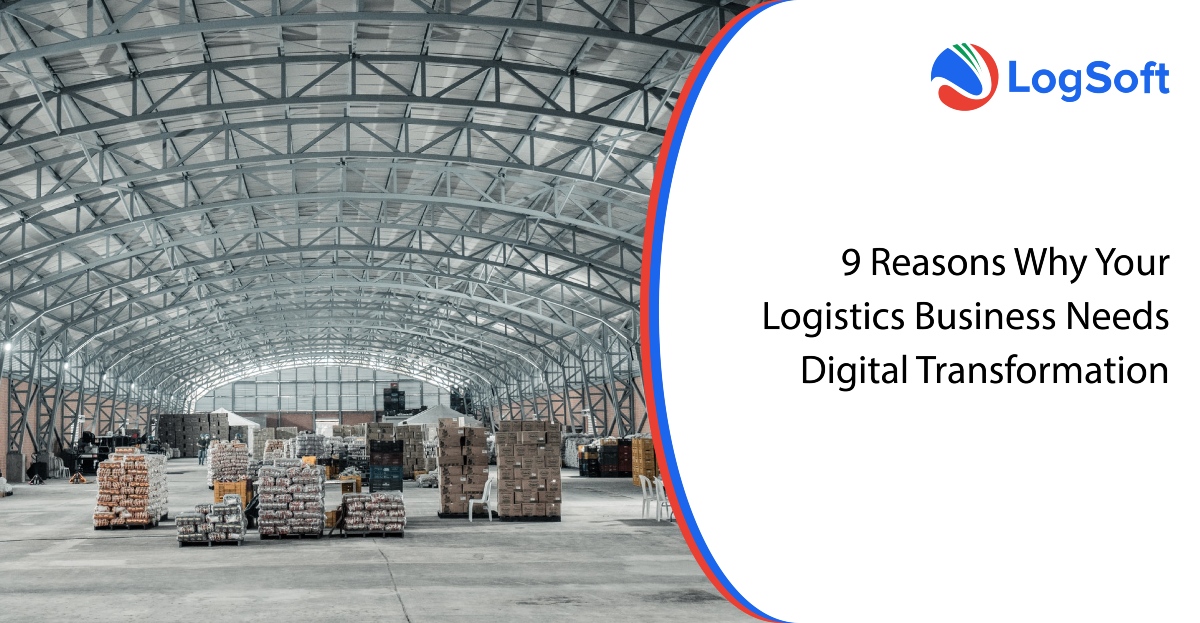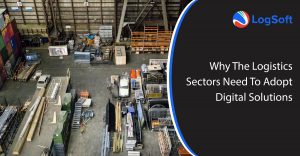The global pandemic has accelerated the need for various industries to undergo a process of digitization in the last few years. Emerging key trends such as IoT, data analytics, automation, and streamlining workflows became crucial to ensure critical supplies were distributed during Covid-19.
With increased competition, increased customer expectations and urgency in delivery for some sectors – there is now a need more than ever for higher efficiency in a logistics supply chain.
The transport and logistics industry is one of the fastest growing industries in the world and businesses in this realm need to adjust more than ever from long-established practices to face the challenges of international trade.
As mentioned, the current pandemic accelerated the need for digitalization solutions.
New technologies allow seamless end-to-end collaboration and increased efficiency between the different stakeholders.
Therefore, the digital transformation through the value chain is unstoppable and much-needed.
Digitalization Vs. Digitization Vs. Digital Transformation
Digitization is defined as the conversion of any data into digital format. Digitization converts any analogue signal into a digital format.
Example: Scanning a document and converting it into a digital form, such as a PDF file. Recording a presentation in an audio or video format converts and stores it in digital format.
Digitalization is transforming any business into a digital format. The processes in industry are converted into digital form by using digital methods and technologies. The business process relies on digital tools.
Example: The data collected over the Internet is converted into business leads by digital tools.
Digital transformation is described as an organization embracing digital technologies and cultural change on a much larger scale. Digital transformation meaning is an integration of organizational reform with digital technology.
Example: Artificial Intelligent-based applications, Employee using Digital tools.
Why Do Logistics Companies Need Digital Transformation?
More than ever, there is now a need for the world to become digital and the pandemic pushed the transport and logistics to adopt more digital solutions to keep up with day-to-day tasks virtually.
Due to the numerous stakeholders in different countries within the supply chain in the logistics sector – the digital transformation of businesses and operations is vital to enhance end-to-end visibility and efficiency, shipping processes and back-office operations have to become digital. Real-time freight rates, paperless bills of lading, and automation improve operational efficiency notably.
Even though digitalization is not the objective of the business itself, it is needed to enable more transparent and efficient solutions.
A digital life needs digital solutions for the logistics industry to cope with the increasing demands in global trade and rising customer expectations.
Cost and Time Efficiency Through Automation
Time is money and time is one of the most valuable goods in the logistics industry. Every step and phase of any logistics supply chain process has to be timed perfectly to ensure the supply chain remains fully operational with disruption free movement of goods within the supply chain.
Very short shipping times results in shippers struggling to meet their delivery goals. Delays often cause extra costs like detention and demurrage charges. The very complex operations overall in the maritime supply chain can be enhanced by automation through digitalization.
The use of very limited human resources can be optimized by the automation of back-office operations such as emails or making calls to track freight, get rates or getting the paperwork done.
With digitalization, not only does time efficiency increase notably, but the error ratio also drops significantly as you and your team will be able to access various information and data through single digital platforms.
End-to-End Visibility With Real-Time Tracking
A key thing to keep in mind is that – digitalisation does not make back-office operations more efficient but it creates space for better utilization of your human resources and also allows a flexible reaction of disruption within the supply chain.
By using digital solutions, you have real-time access to tracking. This helps understand and mitigate possible delays and disruptions in the logistics supply chain.
Another important advantage of end-to-end visibility is dynamic routing. Through permanent data sharing, it is possible to avoid upcoming delays through route optimization. This saves time in case of disruptions like a maritime bottleneck due to port congestion or blank sailing.
Receiving constant updates of the route and the ETA, shippers, and forwarders can re-route the shipment to ensure on-time delivery and customer satisfaction.
Interoperability Through Digitalization
Digitalization helps companies not only to streamline data flowing through their operations but also gain data-based insights that can help with improving efficiencies.
Furthermore, digitalization and data usage is the precondition to a global interoperability system between the different stakeholders.
When there is more active exchange of data between different parties and increased transparency, it makes the logistics industries more sustainable and will allow true end-to-end visibility and capture efficiencies.
However, some may argue that interoperability is still in the works and will need a larger global shift by all stakeholders, starting by adopting digital solutions is the first step into a brighter future with new opportunities.
The Internet of Things (IoT)
One component that is an important requirement for end-to-end visibility within a supply chain is to have IoT devices at nodal points across the value chain.
These IoT devices help businesses track their containers in real-time and can carry out other various functions like measuring the temperature and humidity of containers to ensure quality standards of sensitive goods.
IoT devices collect data that help optimize processes and improve efficiency and costs and push them to the cloud.
Digitalization as a Basic Requirement for Blockchain
One of the biggest developments of the digital age is blockchain. It offers businesses end-to-end solutions for efficient operations.
Blockchain is basically a decentralized public ledger system that allows for community ownership of data, with the records being immutable without explicit approval from all the stakeholders within the network.
The digital solution gives more visibility into the network and helps eliminate unnecessary intermediaries from within the supply chain. It can reduce bottlenecks and clerical errors, while smart contracts would increase transparency.
Data Analytics
Data is gold when collected and used the right way, otherwise, it’s just something that takes up storage space.
For making data utilitarian, it is critical to ensure the collected data is streamlined – for instance, data should be digitized to be accessible.
This access is not only for all team members but also for different software that analyzes data and helps optimize internal and external processes. The right data usage would impact the workflows within the company, improve operations, and create the foundation of the implementation of blockchain and interoperability.
Optimization of Internal Operations
Logistics industries rely on complex operations between several stakeholders. The need for fast and on-time delivery forces every stakeholder along the supply chain to adapt their business model to keep up with the overall business operations in this upcoming digital world.
Companies often lack and can be inefficient with back-office operations. Teams may not have the transparency they need to operate fast and in efficient ways.
The cutthroat competition within the market of logistics providers is increasing the pressure for all involved companies to optimize time, costs, and operations.
By adopting digital solutions like pallet management or pallet and container management systems – you can keep your entire team on the same page.
Back-office operations can be automated and monitored with the same software and be accessible from any place in the world for all team members.
Aside from making data ubiquitously available across the organization, redundant processes such as sending or receiving documents – like invoices and bills of lading – can be automated.
Conclusion
There are several reasons for a logistics business to adopt digital solutions, the main advantage being efficiency in the supply chain.
Automating back-office operations enables companies to track and monitor complex business activities with relative ease. The increased time and cost efficiencies will allow human resources to focus on the business and not on time-consuming paperwork or redundant tasks.
Digital tools help streamline data, optimize both internal and external operations and meet satisfactory customer demands and achieve business goals.
Want to take your first step towards the digitalization of your logistics business?
Reach out to the LogSoft team to take your first step towards adopting a digital solution to make your logistics supply chain management hassle-free.


